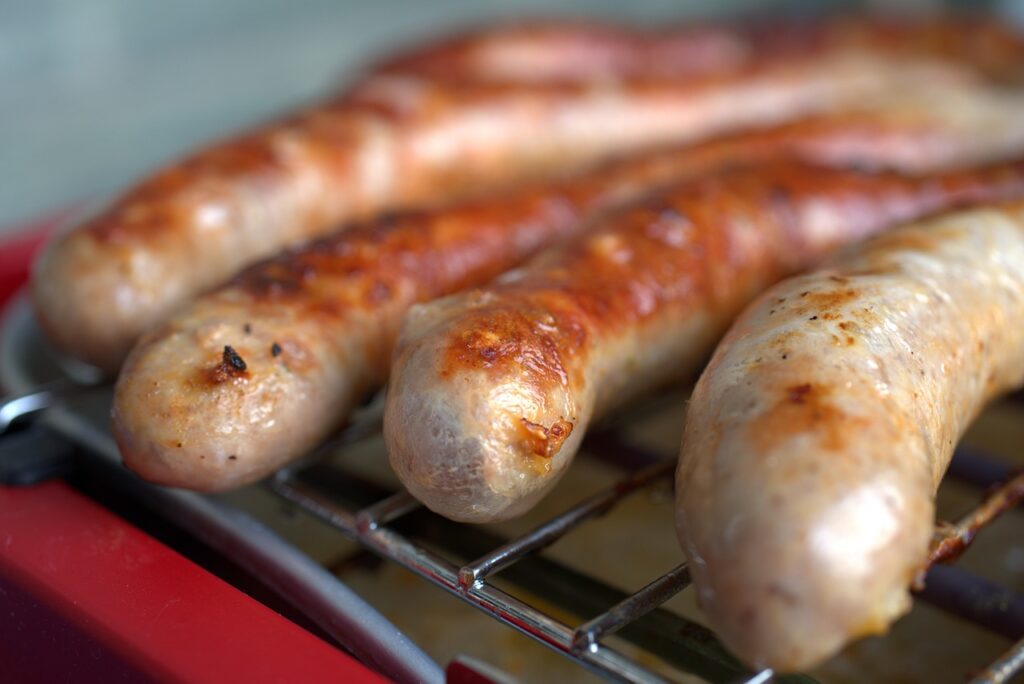
If you’ve ever come home to find your beloved dog happily gnawing on your brand new couch, you’re not alone. Many pet owners have struggled with the challenge of preventing their furry friends from chewing on furniture. But fear not, because in this article, we’re going to explore some practical and effective strategies that will help you put an end to this destructive behavior. Say goodbye to chewed-up cushions and hello to a well-behaved pup!
Understanding Why Dogs Chew
Dogs have a natural instinct to chew, which is rooted in their evolutionary history. Chewing helps keep their teeth clean and strong, and it provides mental stimulation. Additionally, chewing can relieve teething discomfort in puppies. However, dogs may also chew out of boredom or anxiety. Understanding the reasons behind your dog’s chewing behavior is crucial in finding effective solutions.
Natural Instincts
Dogs have a natural need to chew, and this behavior can be traced back to their ancestors who relied on their jaws for hunting and survival. The act of chewing releases endorphins in dogs, which can provide a sense of satisfaction and relaxation. By providing appropriate outlets for chewing, you can help satisfy this instinctual need while protecting your furniture.
Boredom or Anxiety
Sometimes, dogs chew as a result of boredom or anxiety. If your dog is not mentally or physically stimulated enough, they may resort to chewing as a way to occupy themselves. Similarly, dogs with separation anxiety may chew when left alone as a way to cope with their distress. Identifying the underlying cause of your dog’s boredom or anxiety is crucial in preventing destructive chewing behavior.
Providing Appropriate Chewing Alternatives
To prevent your dog from chewing on furniture, it is important to provide them with suitable chewing alternatives. By offering a variety of chew toys and rotating them regularly, you can keep your dog engaged and satisfied.
Choose Suitable Chew Toys
Select chew toys that are specifically designed for dogs. Opt for durable toys made from materials such as rubber or nylon, as they can withstand the chewing force of most dogs. Avoid toys that can easily be torn apart or swallowed, as this can pose a choking hazard. Investing in high-quality chew toys will not only save your furniture but also provide your dog with a safe and enjoyable chewing experience.
Rotate Toys Regularly
To keep your dog interested in their chew toys, it is important to rotate them regularly. Introducing new toys and removing older ones will help maintain their novelty and prevent boredom. By providing a variety of textures and shapes, you can cater to your dog’s individual preferences and keep them engaged in appropriate chewing.
Consider Treat-Dispensing Toys
Treat-dispensing toys can be a great way to satisfy your dog’s need to chew while providing mental stimulation. These toys are designed to hold treats or kibble, requiring your dog to work for their rewards. By engaging your dog in problem-solving activities, treat-dispensing toys can help alleviate boredom and redirect their chewing behavior onto something more appropriate.

This image is property of pixabay.com.
Creating A Chewing-Free Environment
Preventing access to furniture and other chewable items is essential in creating a chewing-free environment for your dog. By using deterrents and managing their environment, you can significantly reduce the chances of destructive chewing.
Use Deterrents
There are several taste deterrent sprays available on the market that can be applied to furniture and other items to discourage chewing. These sprays have a bitter taste that dogs find unpleasant, serving as a reminder to avoid chewing on those particular objects. Additionally, natural deterrents such as citrus peels or vinegar can be effective in deterring dogs from chewing areas they should not.
Block Access to Certain Areas
If you notice that your dog is consistently targeting a specific area or piece of furniture, consider blocking their access to it. Use baby gates or other physical barriers to restrict their movement and redirect their attention to more appropriate chewing options. By limiting their access to problematic areas, you can effectively manage their chewing behavior and protect your valuable belongings.
Use Gates or Crates
In situations where you cannot supervise your dog, it is important to confine them safely. Utilize baby gates or crates to restrict their access to certain parts of the house, ensuring that they are in a secure and comfortable environment. By confining your dog when you are unable to closely monitor them, you can prevent unwanted chewing incidents and reduce the risk of injury or ingestion of harmful objects.
Training and Behavioral Modification
Training and behavioral modification techniques play a crucial role in redirecting your dog’s chewing behavior onto appropriate alternatives. By teaching commands and providing positive reinforcement, you can effectively train your dog to understand what is acceptable to chew and what is not.
Teach the ‘Leave It’ Command
The ‘Leave It’ command is a valuable tool in teaching dogs to refrain from chewing on forbidden items. Start by offering your dog a treat in a closed fist, and when they try to investigate or paw at your hand, say “leave it” in a firm but gentle tone. Once your dog loses interest in your hand and stops attempting to access the treat, immediately reward them with a different treat and praise. Consistently practicing this command will teach your dog to focus their attention on appropriate chew toys instead of furniture.
Positive Reinforcement Training
Positive reinforcement is a highly effective training method in shaping desired behaviors. Whenever you catch your dog chewing on an appropriate chew toy, offer verbal praise, and reward them with treats or affection. By associating positive experiences with appropriate chewing, you will reinforce the desired behavior and make it more likely for your dog to choose the correct chew toys in the future.
Seek Professional Training
If your dog’s chewing behavior persists despite your best efforts, it may be beneficial to seek professional help from a certified dog trainer or behaviorist. They can provide expert guidance tailored to your dog’s specific needs and help address any underlying issues contributing to the chewing problem. A professional trainer can also assist in developing a personalized training plan to effectively modify your dog’s behavior.

This image is property of pixabay.com.
Addressing Boredom and Anxiety
Boredom and anxiety are common triggers for destructive chewing behavior in dogs. By addressing these underlying issues, you can significantly reduce the likelihood of your dog resorting to furniture chewing.
Increase Exercise and Mental Stimulation
Regular exercise and mental stimulation are essential for keeping dogs physically and mentally engaged. Increase the frequency and duration of walks to ensure your dog gets sufficient physical exercise. Engage in interactive play sessions and provide puzzle toys or food-dispensing toys that require problem-solving. By tiring your dog out mentally and physically, you can help alleviate boredom and anxiety, reducing the desire to chew.
Provide Interactive Toys
Interactive toys, such as puzzle toys or toys that require your dog to work for treats, can be a great way to provide mental stimulation. These toys challenge your dog’s problem-solving skills and keep them engaged for extended periods. By focusing their attention on interactive toys, your dog will be less likely to seek out furniture as a source of entertainment.
Consider Doggy Daycare or Hiring a Walker
If your dog’s chewing behavior is primarily a result of separation anxiety, consider enrolling them in a doggy daycare program or hiring a dog walker. These options can provide your dog with much-needed socialization and exercise during the day when you are away. Being surrounded by other dogs and engaging in supervised playtime can help alleviate anxiety and prevent destructive chewing behavior.
Managing Separation Anxiety
Separation anxiety can be a significant contributor to chewing behavior when dogs are left alone. By implementing specific techniques, you can help manage your dog’s separation anxiety and reduce their destructive chewing tendencies.
Gradual Departures and Returns
When leaving and returning home, it is crucial to keep your departures and arrivals low-key. Gradually desensitize your dog to your pre-departure cues by practicing short departures and returns. Start by walking out of the door for just a few seconds and gradually increase the duration over time. By making departures and returns less stressful, you can help reduce your dog’s anxiety and minimize the likelihood of them resorting to destructive chewing.
Desensitization Techniques
Desensitization involves exposing your dog to the triggers that cause their anxiety in a controlled and gradual manner. For example, if your dog becomes anxious when you pick up your car keys, try picking up the keys at random times throughout the day without actually leaving. Pair this action with treats or playtime to create positive associations. Gradually increase the intensity of the triggers until your dog no longer shows signs of anxiety. Desensitization can help your dog overcome their anxiety-related chewing behavior.
Consult a Veterinary Behaviorist
In severe cases of separation anxiety, it may be necessary to seek help from a veterinary behaviorist. These professionals specialize in diagnosing and treating behavioral issues in animals. They can develop a comprehensive treatment plan that may include behavior modification techniques, medication, or a combination of both. With their expertise, they can help address the underlying causes of your dog’s separation anxiety and minimize their destructive chewing tendencies.

This image is property of pixabay.com.
Discourage Undesired Chewing
In addition to providing appropriate chew toys and training, there are several measures you can take to discourage your dog from chewing on furniture or other undesired items.
Use Taste Deterrents
Taste deterrents, such as bitter apple sprays, can be applied to furniture or other household objects to make them unappealing to your dog. These sprays have a strong and unpleasant taste that dogs find disagreeable. By coating objects with taste deterrents, you can discourage your dog from chewing on them. However, it is important to note that taste deterrents may not be effective for all dogs, and it is essential to provide alternative chewing options.
Cover Furniture with Non-Chewable Materials
If there are certain pieces of furniture that your dog is particularly drawn to, consider covering them with non-chewable materials. Protective coverings or plastic casings can act as a physical barrier and prevent your dog from accessing the items. This method can be effective in conjunction with providing appropriate chew toys and training your dog to understand what is acceptable to chew.
Keep Furniture Clean and Free of Food Odors
Dogs have a keen sense of smell, and the lingering scent of food can be enticing for them. Ensure that you clean your furniture thoroughly and eliminate any food odors that could attract your dog’s attention. By removing the temptation, you can help deter them from chewing on furniture and redirect their focus onto appropriate alternatives.
Supervision and Management
Proper supervision and management are crucial in preventing destructive chewing incidents and ensuring your dog’s safety. By implementing confinement methods and avoiding excessive punishment, you can effectively manage your dog’s behavior.
Supervise Your Dog
Whenever your dog is not confined, it is important to supervise them closely. Keep an eye on their behavior and redirect their attention if you notice any signs of chewing on inappropriate items. By consistently supervising your dog, you can correct unwanted behaviors in real-time and reinforce appropriate chewing habits.
Use Confinement Methods
When you are unable to supervise your dog, it is recommended to confine them to a safe area. Utilize crates or designated pet gates to limit their access to certain parts of the house. Ensure that the confinement area is comfortable and contains appropriate chew toys to keep your dog entertained. Confining your dog when necessary will prevent them from engaging in destructive chewing and promote positive chewing habits.
Avoid Excessive Punishment
While it may be tempting to punish your dog for chewing on furniture, it is important to avoid excessive punishment. Physical punishment or harsh scolding can lead to fear and anxiety in your dog, worsening their behavior issues. Instead, focus on redirecting their attention onto appropriate chew toys and providing positive reinforcement for good behavior. Consistency and patience are key in effectively managing your dog’s chewing habits.
Health and Medical Considerations
In some cases, excessive chewing can be a sign of underlying health or medical issues. Regular veterinary check-ups, dental care, and investigating potential health concerns are important in ensuring your dog’s well-being.
Regular Veterinary Check-ups
Schedule regular check-ups with your veterinarian to ensure that your dog’s overall health is in good condition. A thorough examination can help identify any potential underlying medical issues that may be contributing to their chewing behavior. Addressing these underlying health concerns can help alleviate their chewing tendencies.
Dental Health Maintenance
Proper dental care is essential in maintaining your dog’s oral health and reducing their desire to chew excessively. Provide dental chews or toys specifically designed to promote healthy teeth and gums. Regular brushing and professional cleanings under the guidance of your veterinarian can also contribute to your dog’s dental health and help prevent chewing due to dental discomfort.
Investigate Potential Health Issues
If your dog’s chewing behavior is accompanied by other troubling symptoms such as excessive thirst, weight loss, or changes in appetite, it is important to investigate potential health issues. Conditions such as gastrointestinal disorders or nutrient deficiencies can manifest as increased chewing behavior. Consult your veterinarian to rule out any medical conditions that may be contributing to your dog’s chewing habits.
Consulting a Professional
If you have tried various techniques and are still struggling to prevent your dog from chewing on furniture, it may be beneficial to seek professional guidance. Veterinarians and certified dog trainers can provide expert advice and personalized solutions to address your dog’s specific needs.
Seek Advice from a Veterinarian
Your veterinarian is a valuable resource when it comes to understanding your dog’s behavior and recommending appropriate interventions. They can conduct a thorough assessment, address any underlying health concerns, and provide guidance on behavior modification techniques specific to your dog’s needs. Seeking advice from a veterinarian is particularly important if your dog’s chewing behavior is accompanied by other concerning symptoms.
Consult a Certified Dog Trainer
Certified dog trainers specialize in behavior modification and can help you develop a customized training plan for your dog. They can assess your dog’s behavior, identify any triggers or underlying issues, and guide you through effective training techniques. Collaboration with a certified dog trainer can increase your chances of successfully preventing your dog from chewing on furniture and promote positive behavior.
In conclusion, understanding the reasons why dogs chew and implementing appropriate strategies can help prevent destructive chewing behavior. By providing suitable chewing alternatives, creating a chewing-free environment, utilizing training techniques, addressing boredom and anxiety, and considering health factors, you can effectively redirect your dog’s chewing habits to more appropriate outlets. Remember to approach the training process with patience, consistency, and positive reinforcement to set your dog up for success and establish a harmonious living environment. With dedication and the right guidance, you can help your dog overcome their chewing tendencies and protect your furniture from unwanted destruction.

